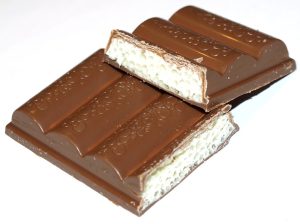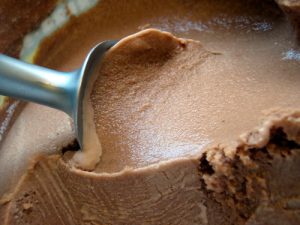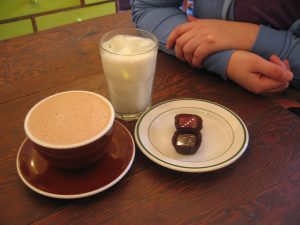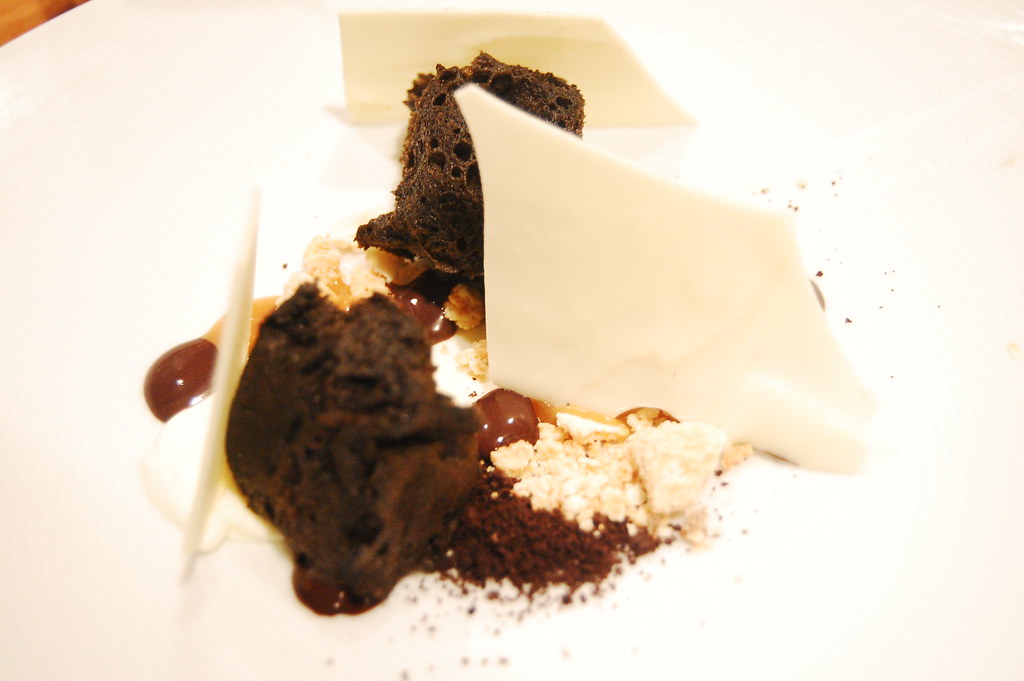In the illustrious world of chocolate, the variety is as vast as it is delightful. Among the diverse chocolate spectrum, white and milk chocolate hold unique positions, each with its distinctive taste, texture, and aficionados. The debate between white chocolate and milk chocolate is as old as it is sweet, often stirring lively discussions among chocolate enthusiasts. This article delves into the nuances that define and differentiate white chocolate and milk chocolate, offering a refined understanding of their composition, nutritional profiles, and culinary applications.
The Essence of White Chocolate



White chocolate, a confection often celebrated for its creamy texture and sweet, vanilla-imbued taste, occupies a distinct niche within the chocolate spectrum. The popular perception often conflates white chocolate with its cocoa-rich counterparts; however, a closer examination reveals a markedly different composition. The absence of cocoa solids in white chocolate, a defining characteristic of other chocolate varieties, grants it its characteristic pale hue.
Composition:
- Cocoa Butter: Cocoa butter is the cornerstone of white chocolate’s composition. Extracted from the fat of cocoa beans, cocoa butter is instrumental in bestowing upon white chocolate its signature smooth and creamy texture. The meticulous process of extracting cocoa butter while retaining its quality is a testament to the artisanal craftsmanship that underpins white chocolate production.
- Milk Solids: The infusion of milk solids augments the creamy texture of white chocolate, rendering it rich and velvety. The milk solids also contribute to the sweet and mild flavor profile that sets white chocolate apart from its cocoa-laden counterparts.
- Sugar: The sweetness of white chocolate is further accentuated by the addition of sugar. The higher sugar content, compared to dark or milk chocolate, often appeals to those with a penchant for sweeter confections, making white chocolate a beloved choice for many.
The Realm of Milk Chocolate



Milk chocolate, with its harmonious melding of cocoa solids, milk solids, and sugar, presents a sweet, creamy, and cocoa-infused palate experience that has endeared itself to global audiences.
Composition:
- Cocoa Solids: The cocoa solids are the essence of milk chocolate, imparting the characteristic chocolatey flavor that is both rich and comforting. The percentage of cocoa solids can vary among different brands and types of milk chocolate, thereby creating a spectrum of flavor intensities within the realm of milk chocolate.
- Milk Solids: Similar to white chocolate, milk solids in milk chocolate contribute to its creamy texture. However, juxtaposed with the cocoa solids, the milk solids create a unique, balanced flavor profile that is both sweet and cocoa-infused.
- Sugar: The addition of sugar in milk chocolate serves to temper the bitter undertones of the cocoa solids, yielding a sweet and delectable flavor profile that has become synonymous with milk chocolate.
Nutritional Divergence
The diverging compositions of white and milk chocolate translate into distinct nutritional profiles, offering different health implications.
- Antioxidants: The presence of cocoa solids in milk chocolate provides a host of antioxidants, notably flavonoids, which are reputed for their health-promoting benefits. These antioxidants have been associated with improved cardiovascular health, reduced inflammation, and potential neuroprotective effects. Conversely, white chocolate, devoid of cocoa solids, lacks these antioxidant benefits, placing it at a nutritional disadvantage in this regard.
- Sugar and Fat Content: The absence of cocoa solids in white chocolate often necessitates a higher sugar and fat content to achieve the desired texture and sweetness. This elevated sugar and fat content could potentially impact the calorie count of white chocolate, making it a less favorable choice for those monitoring their sugar and calorie intake.
The discourse surrounding white and milk chocolate extends beyond mere flavor preferences, delving into the realms of nutritional science and artisanal craftsmanship. The unique compositions and resulting nutritional profiles of these chocolate varieties offer a rich tapestry of choices, catering to the diverse palate preferences and health considerations of chocolate aficionados.
Culinary Delights
The realm of chocolate extends beyond mere indulgence, stepping into a vast world of culinary creativity. Both white and milk chocolate, with their distinctive flavor profiles and textural attributes, unlock a treasure trove of culinary possibilities. However, their unique characteristics often guide them along different paths in the culinary journey, making each suitable for distinct gastronomic adventures.
Flavor Pairings:
- White chocolate, with its sweet, creamy, and often vanilla-tinged profile, finds harmonious companions in fruits, nuts, and certain spices. Its sweetness can balance the tartness of fruits like berries or citrus, while its creaminess complements the crunch of nuts. Furthermore, spices like cardamom or cinnamon can introduce a warm and aromatic dimension to the sweet and mellow character of white chocolate.
- On the other hand, milk chocolate, with its comforting cocoa undertones, embraces a broader spectrum of flavors. Its cocoa notes can form a rich and delightful alliance with coffee, offering a robust flavor experience. Additionally, milk chocolate can also pair well with some spicy notes, like chili or paprika, creating a tantalizing sweet and spicy affair.
Baking and Cooking:
- The culinary versatility of white and milk chocolate extends into baking and cooking, albeit with different outcomes. Their disparate melting points and flavor profiles often dictate their roles in various recipes. White chocolate, with a delicate composition, might require gentle heat when melting to prevent it from seizing. Its sweet profile can be a boon in desserts like mousses, ganaches, or white chocolate chip cookies.
- Milk chocolate, with a more resilient nature due to the presence of cocoa solids, often fares well in a variety of baking scenarios. Its classic chocolatey flavor enriches baked goods like brownies, cakes, and chocolate chip cookies, providing a rich and comforting taste.
Consumer Preferences and Market Dynamics
The dialogue between white and milk chocolate extends into the market arena, reflecting a diverse consumer base with varying taste preferences.
Market Share:
- Milk chocolate, with its timeless chocolatey flavor, often commands a larger market share, resonating with a broad audience who cherish the classic cocoa taste. Its ubiquitous presence in various forms, from bars to baking chips, attests to its enduring popularity.
- Conversely, white chocolate, with its distinct sweet and creamy profile, appeals to a niche yet devoted audience. Despite its lesser market share, white chocolate holds a special place in the hearts of those who favor a sweeter, cocoa-less chocolate experience.
Trend Influences:
- The chocolate market is also swayed by emerging trends, such as the rising popularity of dark chocolate, driven by its purported health benefits. This trend has cast a spotlight on the cocoa content in chocolate, influencing consumer perceptions and choices. While milk chocolate, with its moderate cocoa content, might find a balanced reception, white chocolate may face a challenge due to its lack of cocoa solids.
- Moreover, trends towards ethical sourcing and artisanal production have also influenced the market dynamics and consumer preferences concerning white and milk chocolate. The story of sourcing, the craft of production, and the authenticity of ingredients often play a pivotal role in shaping consumer choices in the contemporary chocolate market landscape.
The intricate interplay between culinary attributes and market dynamics encapsulates the diverse and dynamic nature of the chocolate industry. Whether through the lens of a chef or a consumer, the debate between white and milk chocolate unveils a fascinating exploration of tastes, textures, and market trends.
Conclusion
The debate between white and milk chocolate is a delightful exploration of tastes, textures, and chocolate compositions. Whether one is a purist advocating for the cocoa-infused essence of milk chocolate or a sweet-tooth enthusiast swayed by the creamy allure of white chocolate, the variety in chocolate merely underlines its universal appeal and the endless culinary creativity it inspires. As the chocolate market continues to evolve, the love for both white and milk chocolate remains a sweet constant, reflecting the timeless charm of this beloved ingredient.

